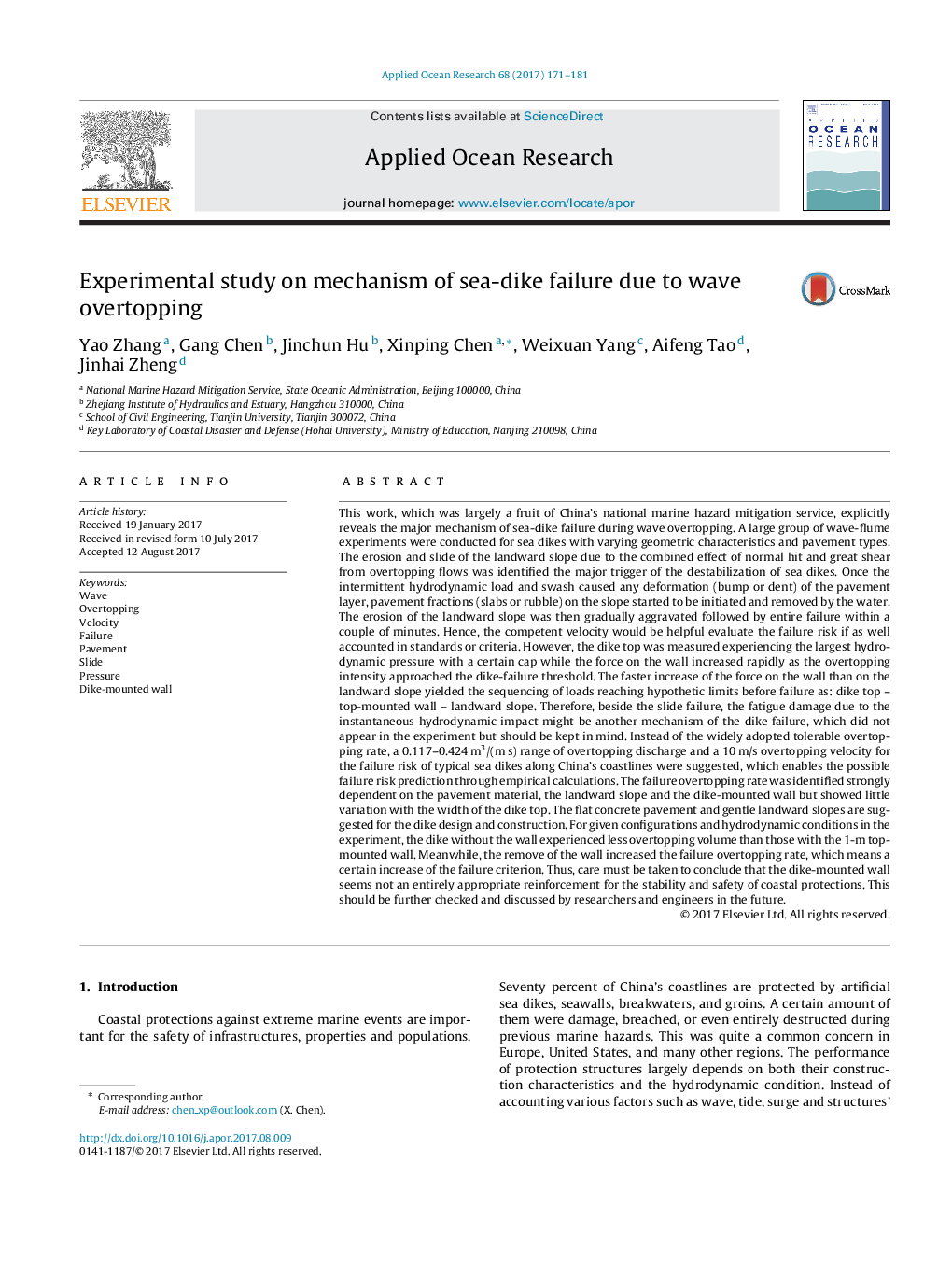| کد مقاله | کد نشریه | سال انتشار | مقاله انگلیسی | نسخه تمام متن |
|---|---|---|---|---|
| 5473162 | 1520235 | 2017 | 11 صفحه PDF | دانلود رایگان |
عنوان انگلیسی مقاله ISI
Experimental study on mechanism of sea-dike failure due to wave overtopping
ترجمه فارسی عنوان
مطالعه تجربی بر روی مکانیسم شکست ناوگان دریایی ناشی از پر شدن موج
دانلود مقاله + سفارش ترجمه
دانلود مقاله ISI انگلیسی
رایگان برای ایرانیان
کلمات کلیدی
موضوعات مرتبط
مهندسی و علوم پایه
سایر رشته های مهندسی
مهندسی دریا (اقیانوس)
چکیده انگلیسی
This work, which was largely a fruit of China's national marine hazard mitigation service, explicitly reveals the major mechanism of sea-dike failure during wave overtopping. A large group of wave-flume experiments were conducted for sea dikes with varying geometric characteristics and pavement types. The erosion and slide of the landward slope due to the combined effect of normal hit and great shear from overtopping flows was identified the major trigger of the destabilization of sea dikes. Once the intermittent hydrodynamic load and swash caused any deformation (bump or dent) of the pavement layer, pavement fractions (slabs or rubble) on the slope started to be initiated and removed by the water. The erosion of the landward slope was then gradually aggravated followed by entire failure within a couple of minutes. Hence, the competent velocity would be helpful evaluate the failure risk if as well accounted in standards or criteria. However, the dike top was measured experiencing the largest hydrodynamic pressure with a certain cap while the force on the wall increased rapidly as the overtopping intensity approached the dike-failure threshold. The faster increase of the force on the wall than on the landward slope yielded the sequencing of loads reaching hypothetic limits before failure as: dike top - top-mounted wall - landward slope. Therefore, beside the slide failure, the fatigue damage due to the instantaneous hydrodynamic impact might be another mechanism of the dike failure, which did not appear in the experiment but should be kept in mind. Instead of the widely adopted tolerable overtopping rate, a 0.117-0.424 m3/(m s) range of overtopping discharge and a 10 m/s overtopping velocity for the failure risk of typical sea dikes along China's coastlines were suggested, which enables the possible failure risk prediction through empirical calculations. The failure overtopping rate was identified strongly dependent on the pavement material, the landward slope and the dike-mounted wall but showed little variation with the width of the dike top. The flat concrete pavement and gentle landward slopes are suggested for the dike design and construction. For given configurations and hydrodynamic conditions in the experiment, the dike without the wall experienced less overtopping volume than those with the 1-m top-mounted wall. Meanwhile, the remove of the wall increased the failure overtopping rate, which means a certain increase of the failure criterion. Thus, care must be taken to conclude that the dike-mounted wall seems not an entirely appropriate reinforcement for the stability and safety of coastal protections. This should be further checked and discussed by researchers and engineers in the future.
ناشر
Database: Elsevier - ScienceDirect (ساینس دایرکت)
Journal: Applied Ocean Research - Volume 68, October 2017, Pages 171-181
Journal: Applied Ocean Research - Volume 68, October 2017, Pages 171-181
نویسندگان
Yao Zhang, Gang Chen, Jinchun Hu, Xinping Chen, Weixuan Yang, Aifeng Tao, Jinhai Zheng,
